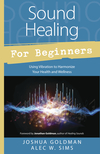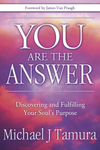Health and Healing Through Music

True health involves the whole you—mind, body, and spirit. These days, I hope no one will refute that, but we workaday folks, as involved as we are with mundane demands, can easily forget to incorporate patterns that support holistic health into our daily lives. Rarely would we hesitate to see a doctor and take medication if we had Strep throat, but what do we usually do if we feel disengaged, anxious, stressed, overworked, or over-stimulated? Don't accept the popular message that these unpleasant states are endemic to our busy and disconnected consumer age. Empowering yourself by nourishing your mental health will have a positive impact on your wellbeing—and you will have fun while doing it.
Whenever I feel stressed or disengaged, I do something spiritually uplifting to remedy the imbalance. Although I've learned to "medicate" my mind and spirit in many ways, one of my favorites is to lose myself in an experience of good music. Music is a great antidote to mental stress because it is versatile, universal, and immediately rewarding. Depending on the tempo, timbre, melody, harmony, and so on, music can diminish mental chatter, shake off a bad day, stimulate a sense of excitement, and encourage a natural state of existence—it can lead you to just be.
Intro to Sound Healing
The roots of my de-stressing habit are planted in music therapy, which has wide-ranging clinical applications, and sound healing (also called harmonic medicine), a broad term that encompasses tones, chants, and vibrations, often from ancient instruments such as Tibetan singing bowls or a didgeridoo. Some ancient instruments target the chakras (the seven energy centers arranged vertically up the spine from the sacrum to the crown) for an integrated experience of sound that balances the body and leads the listener to a higher state of consciousness.
To learn how music, sound and chakras interact, I recommended Andy Barnett's Compose Yourself: Awakening to the Rhythms of Life. By aligning the components of music with the chakra centers, Barnett literally embodies the universal experience of listening to music. "All music is made from seven basic elements," he says. These are 1) pulse, 2) rhythmic pattern, 3) sustained tone, 4) harmony, 5) melody, 6) compositional form and 7) inspiration. Each of these seven elements resonates with certain areas of our body. Pulse, for example, resonates most clearly in our first chakra, located in the lower pelvic region where our center of gravity is strongest. Notice how Barnett describes pulse as a resonant element of the first chakra:
The first chakra is located in the lower pelvic region. Here we are hard-wired into our crucial relationship with gravity. The first chakra carries the message of survival and unity into our consciousness. Through the essential lessons of gravity we realize in body and mind that we must keep moving or we will stagnate and perish. … The first chakra resonates in sympathy to the insistent force of gravity, and we dance—or fall to our death.
By associating the fundamental beat of music with our center of gravity, I understand how the resonant energy of a song can have a curative effect on the body. Think about music and sound as a universal natural medicine. If your favorite upbeat song leads you to celebrate your body by dancing, you can imagine what a relaxing song does for your inner balance. The listening experience invariably involves an intake of energy—it's your job to make sure it's personally therapeutic. For Barnett's musical suggestions, see the Brief Listener's Guide to Healing Sounds.
What's Next?
Sounds become healing sounds, broadly defined, when they invoke a positive physiological or psychic response in the listener. To experience this sort of favorable response, you must choose music and sound you find pleasurable on every level, and you must conscientiously incorporate it into your life. Buying a beautiful Tibetan singing bowl and directing the soothing sound to your chakras could be just as restorative as piping your favorite relaxing song through your ears with your iPod—as long as you engage with the sound.
I've come up with three suggestions—although not revolutionary, they will certainly put you well on your way to diminishing distracting noise and having needed spiritual nourishment at your fingertips.
- Step 1: Itemize. I've always been sensitive to ticking clocks. If I am a guest in someone's home, they will find anything that ticks near my bed stifled in a distant drawer. I also dislike the sound of running water or typified nature sounds, but I enjoy train whistles, church bells, and the sound of a city bus as it slows down to the curb and sighs.
Take an inventory of the ambient sounds in your regular environments. List what you prefer to hear and what you actually hear—list what you like and what makes your head crawl. Maximize the ambient sounds you enjoy and get rid of as many unpleasant sounds as possible. I may not be able to maximize all of the sounds I enjoy, but taking this inventory has heightened my response whenever I hear them. If your computer is loud, by all means, clean the fan, and if you have too many ticking clocks, well—you know what I think about that. - Step 2: Digitize. Digitizing music is all about convenience and demand, so gather up your tunes and put them on your portable player. Go a step further and organize the tracks by specific activity or pick-me-up. Make your digital library eclectic by expanding your genres with a few new items, perhaps opera, classical, chants, world music, or ancient instruments. Consider your portable library a medicine chest for your spirit. Here's a sample starting point.
- Dance break: Chemical Brothers, "Music: Response"
- Before bed: Nick Cave, "Northern Sky"
- Wanderlust: anything on the Putamayo world music label
- A walk around town: Erasure, "Here in My Heart"
- Calming nerves: Madame Butterfly, "Un Bel Di, Vedremo"
- Nature hike: Cat Stevens, "Moonshadow"
- Affirmation: Gladys Knight and the Pips, "Midnight Train to Georgia"
- Relaxation and stress reduction: the music of Steven Halpern
- Reflection: Simon and Garfunkel, "Only Living Boy in New York"
- Step 3: Engage. When is the last time you really listened to music? Not while doing dishes, not while driving, and not while using the treadmill. Turn off your physical and mental capacities, dim the lights, lie on the floor, and absorb the sound. I believe that using music in this way is another form of meditation, with all of the same mind-centering benefits.
Related Products



is subject to certain Terms and Conditions